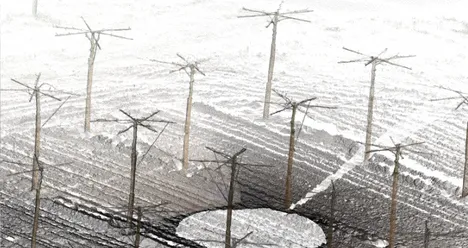Urban Green Systems 4.0
a computational framework for novel Urban Green System design
Rapid urbanisation and environmental degradation draw increasing attention to the delivery of ecosystem services that plants provide in cities. Future urban green systems (UGS) can mitigate the consequences of urban climate change by improving outdoor living quality and protecting buildings and people from the consequences of extreme weather. The design, planning, and management of novel UGS can adapt strategies and methods from historical land use systems. These systems have been developed specifically for certain contexts with the aim of achieving precisely defined functions. They are based on a set of techniques such as coppicing, pollarding, pleaching or grafting. The potential of these practices for the development of novel UGS has not yet been systematically assessed.
Our research aim is to tackle the complex dynamics of UGS design and plant growth management through a novel combination of performance-oriented design, 3D-scanning, and simulation. We set out a framework for a novel workflow, coupling generative and analytical computational methods, and related tools, with an adequate decision support system. This workflow is derived from two historic systems: pollarded tree canopies and shaped hedges. Historically, the emergence and development of these systems is based on a regular comparison between the actual development and the targeted performance. This procedure integrates design decisions, physical plant manipulations and growth processes. According to this approach we will address the following research goals:
O1. Structure and function of manipulated trees - document selected manipulation techniques such as pruning and bending branches and resultant changes in growth and mechanics;
O2. Ecosystem services - develop models to simulate the provision of ecosystem services such as shading or cooling by transpiration;
O3. Growth simulation and analysis methods - explore the link between plant manipulation, structure (the plant’s grown form) and physiological processes at a plant organ’s scale;
O4. Computational Design for urban green system - develop a decision-support system that provides the possibility to evaluate the short-term reactions of tree growth to manipulations with respect to their long-term spatial and microclimatic outcomes;
O5. Validation - evaluate the decision-support system through design applications and cases.
Specifically, we (a) develop new methods to simulate growth reactions of trees to different manipulation practices and to model microclimatic ecosystem services and the structural performance of such systems; (b) explore an iterative design and management approach that integrates these methods with a decision support system; and (c) validate these tools by “reverse engineering” historic cases.
Research Fund
This project is funded by DFG- Einzelvorhaben DACH under the no. DFG-GZ: LU2505/2-1 AOBJ:683826.
Duration
06/2022 – 06/2025
Contact
Prof. Dr.-Ing. Ferdinand Ludwig
Qiguan Shu M.A.
TUM Partners
Prof. Dr. Thomas Rötzer & Prof. Dr. Hans Pretzsch, Chair of Forest Growth and Yield Science, TUM
The 3D scans are kindly supported by Bruns Pflanzen.



